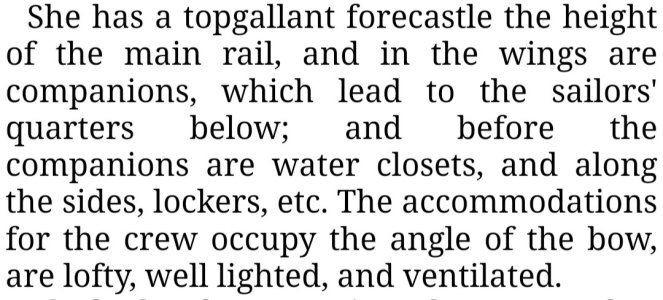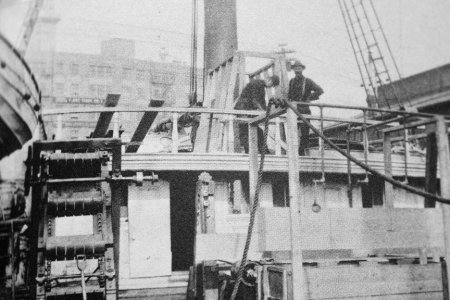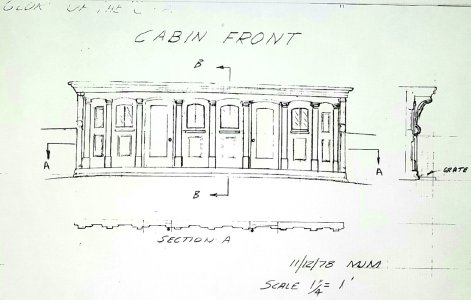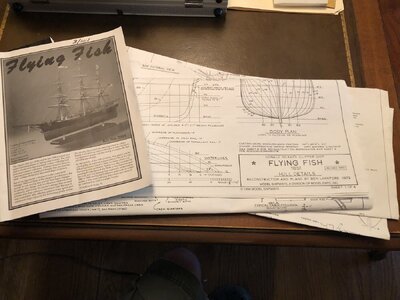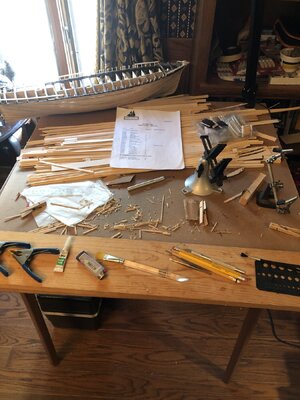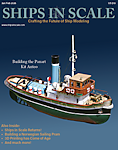I can do a build log that will list the time lime of completing the ship model; complete with step by step photographs.
You can view my current project the Bluenose under group builds on this site
Ted
Ted,
With all due respect to naval architect Ben Lankford, I believe that he misread or didn't have access to details provided by Duncan McLean in his November 4th, 1851 Boston Daily Atlas article on McKay's 4th extreme clipper
Flying Fish. I will explain.
Using excerpts from this write up, I will provide a radically different interpretation of this impressive clipper which hasn't been given the proper representation she deserves.
Beginning at her prow, current commercial models have completely missed what Rob Wiederrich and I refer to as the unique McKay bow. This consists of navel hoods, actually extensions of the prow which overlay a gracefully arching cutwater. Her flying fish figurehead would be attached to the navel hoods, which sandwich the cutwater to which tail fins of the figurehead would have been mounted. JE Buttersworth did a gorgeous painting of her. While he doesn't specifically illustrate these various components, you can see the bow profile is very similar to the one on
Glory of the Seas. I've included an accurate sheer and body tracing of
Flying Fish in a Norwegian museum, with a more realistic flying fish figurehead; a revised bow incorporating missing navel hoods, cutwater and how her fish figurehead would actually have been attached to her prow. On current models, only a bare stem is provided and the flying fish is attached awkwardly to the base of the bowsprit. Meanwhile, here's the complete Boston Daily Atlas article, which has many facts which directly contradict a lot of current
Flying Fish plan layouts. All commercial plans show stand alone water closets and storage lockers just aft of the forecastle deck. Yet, if you read McLean's writing carefully, he's stating the exact opposite. It all has to do with his quirky, confusing descriptive style. I've noticed he switches from describing component layouts from fore to aft and then aft to fore. Bulkheads on
Flying Fish are probably some of the lowest I've read: main rail height is 4 & 1/2' with a 16" monkey rail added on top for a total height of 5'10". However the forecastle height is only at the 4 & 1/2' main rail. Which explains why the accomodation for one watch of the crew below is accessed by companions on the wings of the forecastle. It also means that the entire forecastle bulkhead is a solid wall, not open since that presents a fall risk into the crew quarters below. On current plans this area is open with the windlass stuffed underneath. Here's where it gets even more confusing. Before companions are water closets. That puts the heads ahead of, not behind "abaft" the companions, located down below not on the main deck as current plans put them. In addition, with a low height of 4 & 1/2' its practically a "crawl space." Not much room to even do routine maintenance on the windlass. The most logical solution is that the windlass too was mounted down below. In addition, accommodations are lofty, well lighted and ventilated. Nobody would ever consider a ceiling of slightly over 4 feet as lofty. More proof of a closed forecastle bulkhead. Well lighted implies there might have been windows in the forecastle bulkhead, as well as ventilators on the forecastle deck. Do you see how different this account is to the plans?
McKay's last clipper
Glory of the Seas had a similar coach house as what's seen on
Flying Fish. Again, the plans are far too plain compared to the real front fascia illustrated in the Buttersworth piece. This can also be seen on the real front fascia on the rear coach house in
Glory of the Seas. I've attached a photo of this on the ship as well as Michael Mjelde's illustration of the ornate nature on this section.
Another inaccuracy that can be revised, again with clear photographic proof is curving walls of the poop deck coach house. To provide consistent workspace side walls narrow to match the ship's narrowing profile. An ultra rare
Glory of the Seas stern photo gives indisputable proof. My sketch is included to show how this would have looked. Notice too, a rear companion is offset to the port side, not centrally mounted as on plans.
To conclude, it's my intent to provide factual evidence to help others finally capture historically accurate, full beauty of McKay's marvelous clippers.


